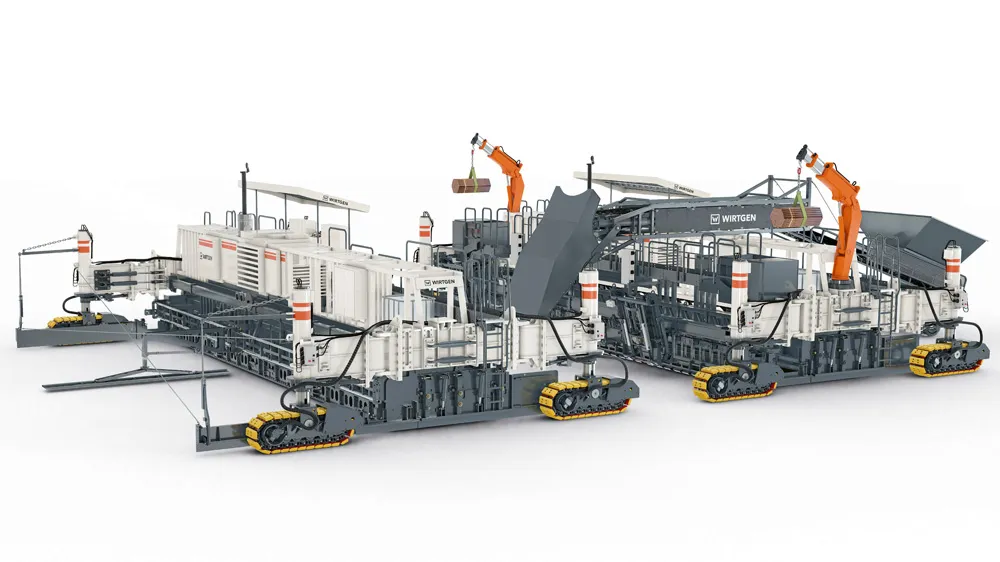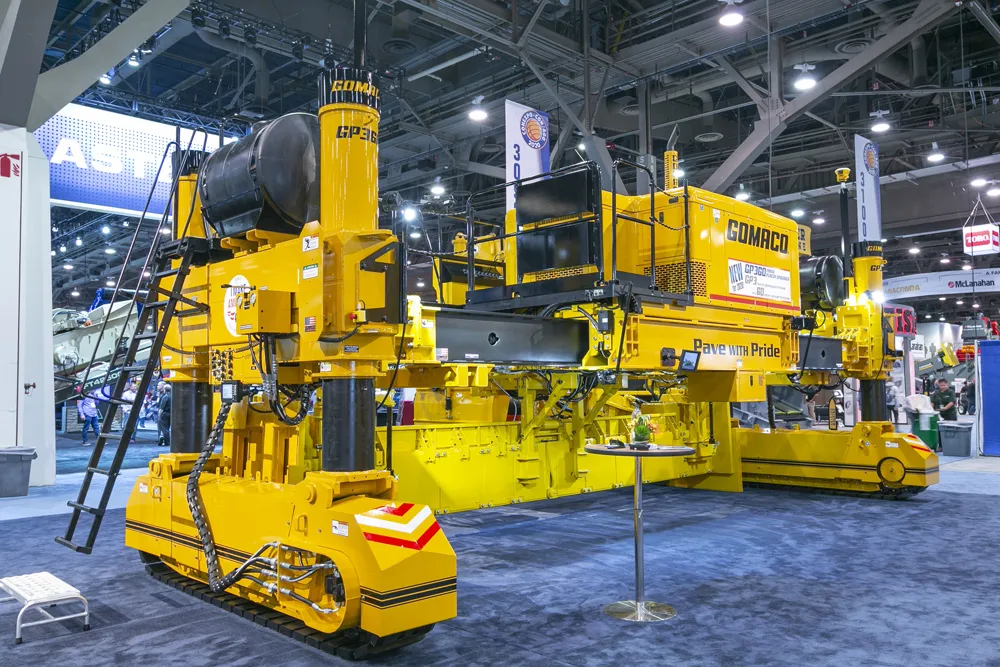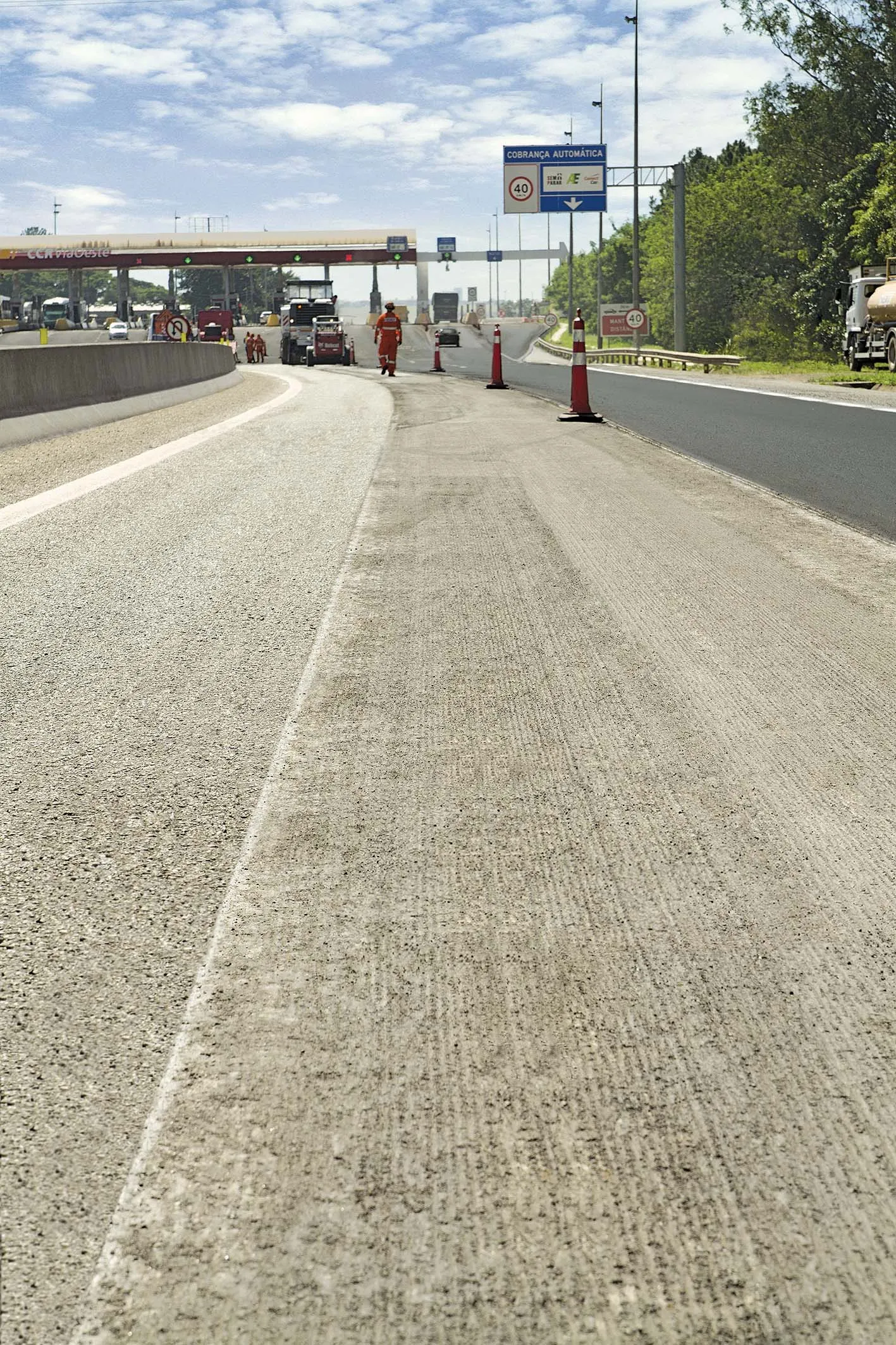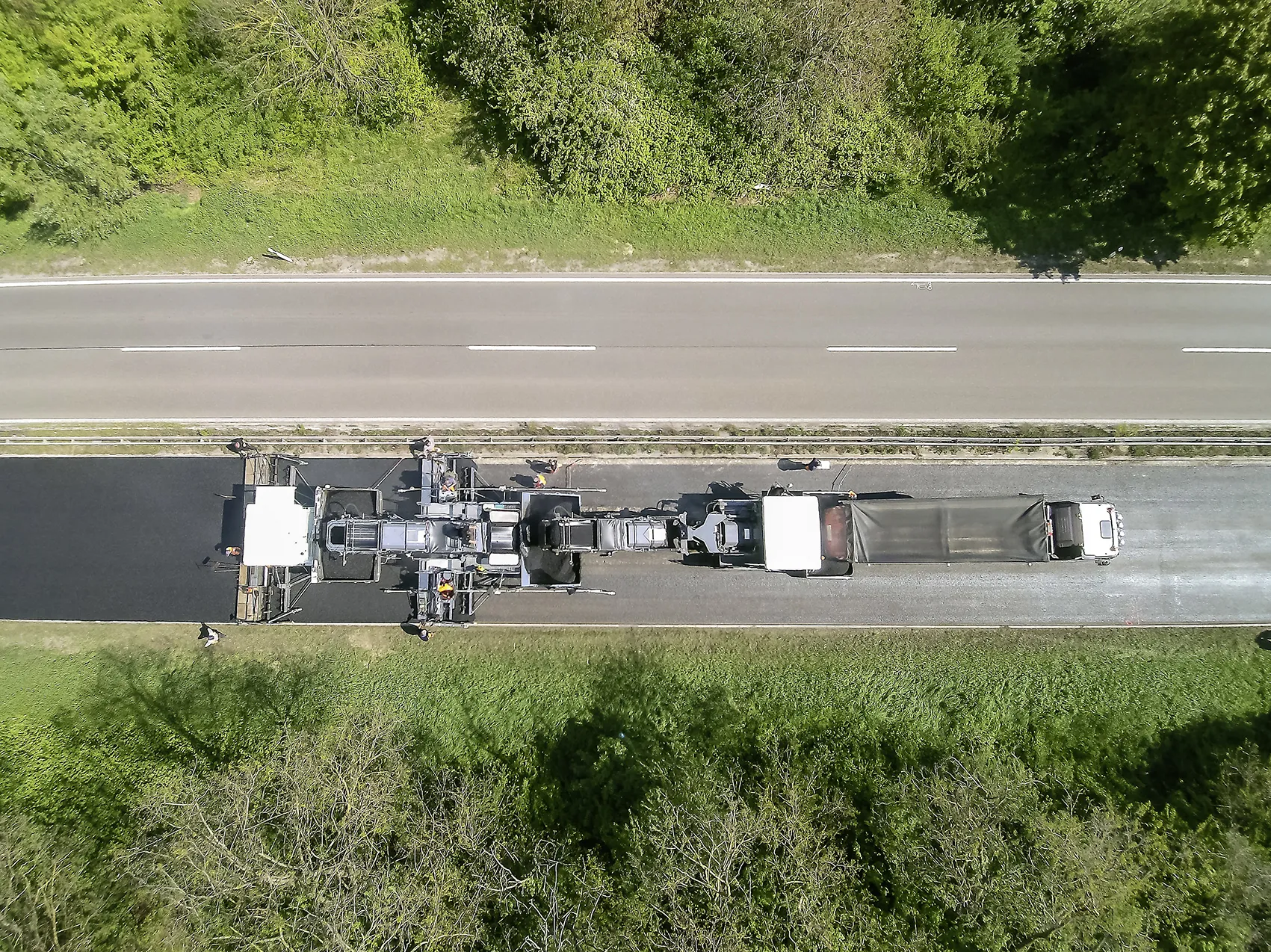
Replacing the proven SP 1500 model, the SP 154i is powered by a 325kW Cummins diesel that meets Stage V/ Tier 4 Final emissions standards. This gives the machine sufficient power reserve to allow it to pave concrete surfaces up to 16m wide and 450mm thick.
When paving concrete in two layers, three separate machines work together to form a paving train: a bottom layer concrete paver, a top layer concrete paver, and a texture curing machine (TCM). For this application, the SP 154i can be used as either a bottom layer or top layer concrete paver.
As a bottom layer paver, the slipform paver is equipped with an automatic dowel bar inserter, up to three automatic side tie-bar inserters, and a concrete conveyor to the top layer paver. The heavy-duty paving mold paves the concrete true to line and level while the paver moves forward. Electric vibrators compact the concrete and then dowels and tie bars are inserted into the bottom layer concrete. This forms the base for the top layer concrete.
When using the SP 154i as a top layer paver, the top layer concrete is conveyed over and across the bottom layer paver via a belt conveyor and placed on the fresh bottom layer concrete in front of the top layer paver. The top layer concrete is paved wet on wet and compacted with T-vibrators specially designed for top layer concrete. The slipform paver comes standard-equipped with an oscillating beam and super smoother to produce a level surface, while the hydraulically adjustable one-piece or two-piece side plates on both sides minimise concrete loss. Specially designed trailing forms and extended side plates additionally ensure that the slipform paver can produce perfect concrete corners.
The SP 154i is said to offer high manoeuvrability and traction, featuring four steerable and slewing crawler units. Making the units independent of each other makes transport easy and results in minimal assembly/disassembly effort. The SP 154i features a high degree of automation, which makes concrete paving extremely cost-effective.









